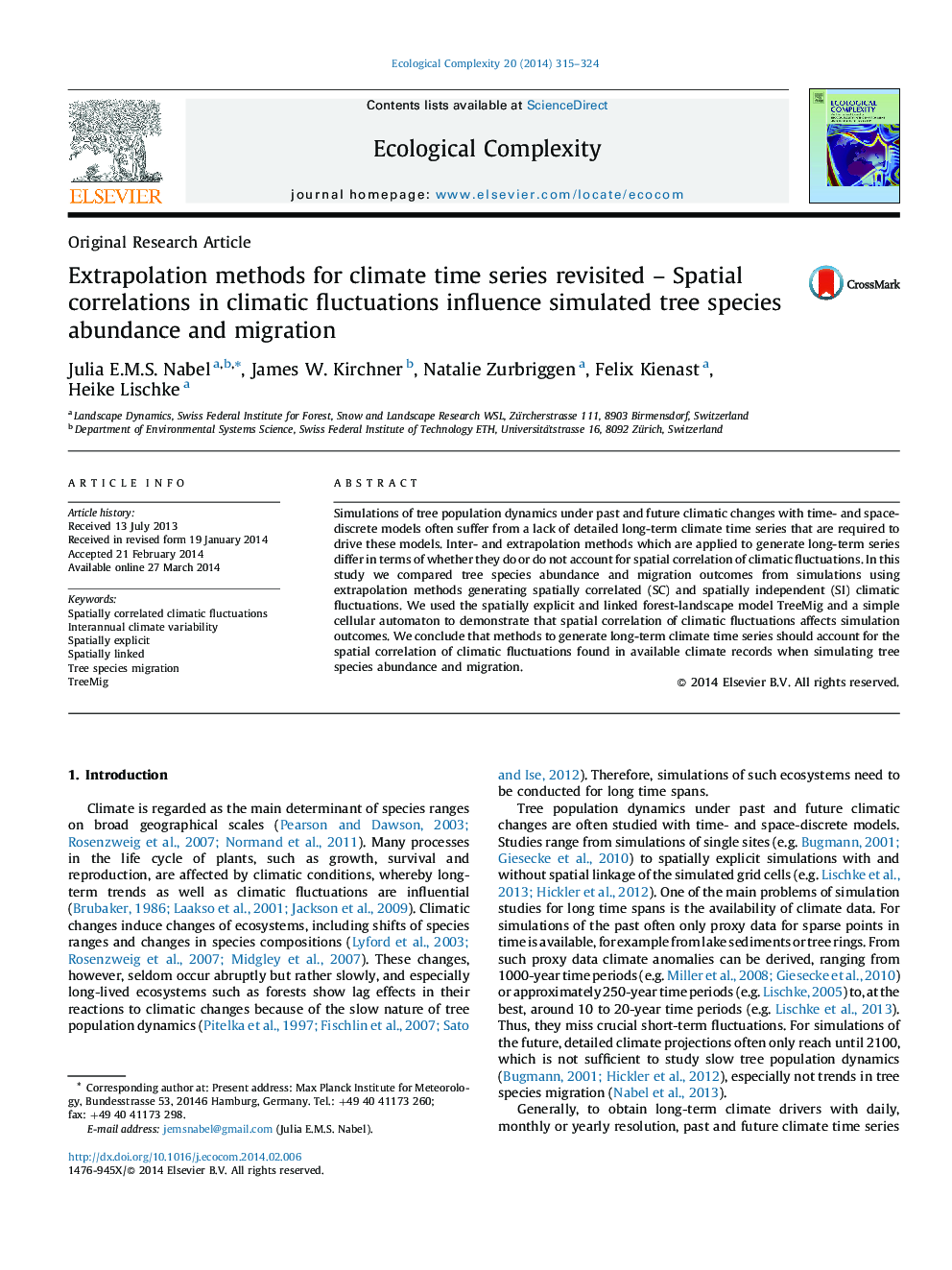| Article ID | Journal | Published Year | Pages | File Type |
|---|---|---|---|---|
| 4372384 | Ecological Complexity | 2014 | 10 Pages |
•We compared simulations with and without spatially correlated climatic fluctuations.•Spatially correlated fluctuations caused spatially synchronised species’ abundances.•Effects on simulated tree species’ migration varied with species’ traits.•Simulations with uncorrelated fluctuations often resulted in faster migration.•Inter- and extrapolations of climate drivers should account for spatial correlation.
Simulations of tree population dynamics under past and future climatic changes with time- and space-discrete models often suffer from a lack of detailed long-term climate time series that are required to drive these models. Inter- and extrapolation methods which are applied to generate long-term series differ in terms of whether they do or do not account for spatial correlation of climatic fluctuations. In this study we compared tree species abundance and migration outcomes from simulations using extrapolation methods generating spatially correlated (SC) and spatially independent (SI) climatic fluctuations. We used the spatially explicit and linked forest-landscape model TreeMig and a simple cellular automaton to demonstrate that spatial correlation of climatic fluctuations affects simulation outcomes. We conclude that methods to generate long-term climate time series should account for the spatial correlation of climatic fluctuations found in available climate records when simulating tree species abundance and migration.
